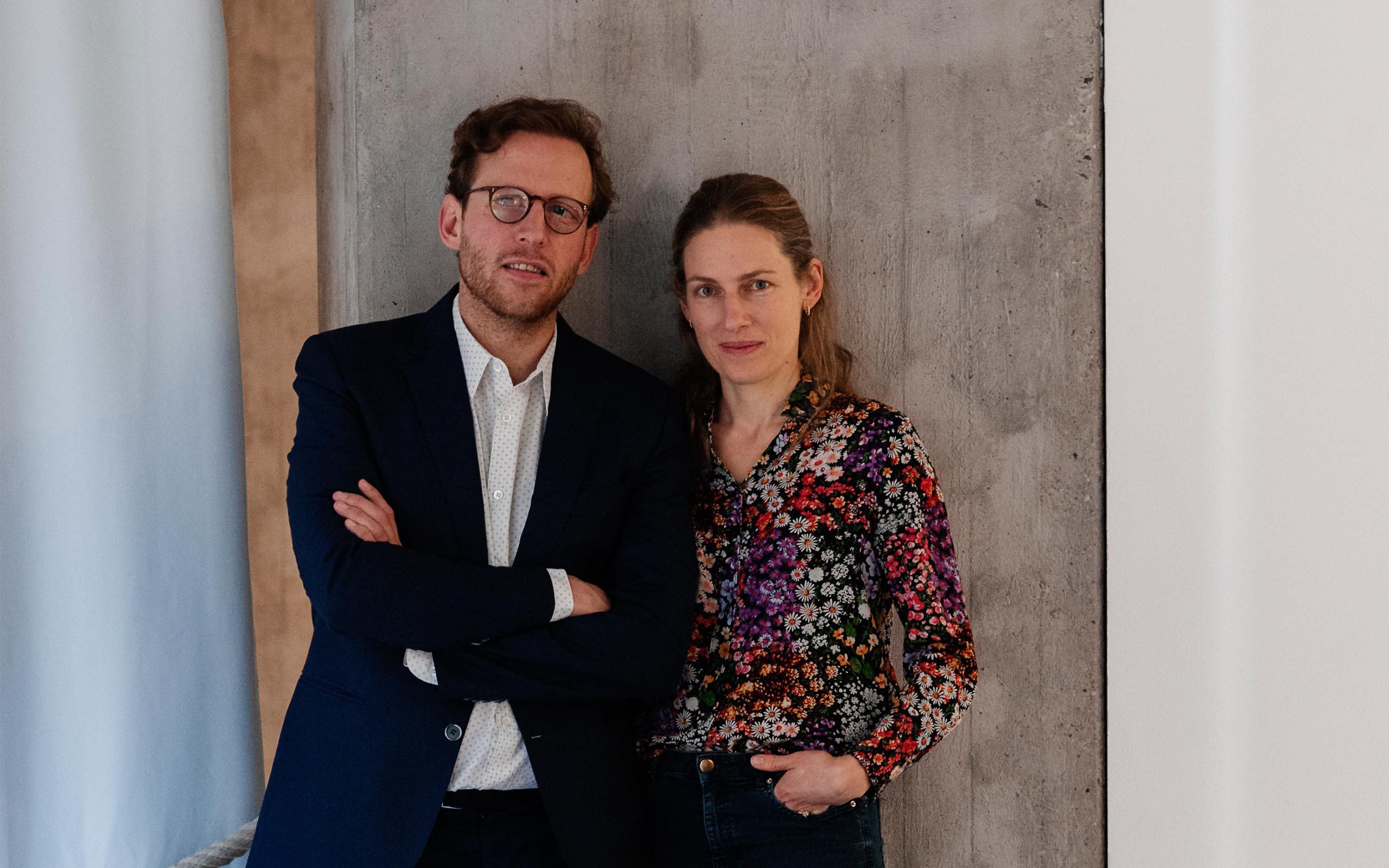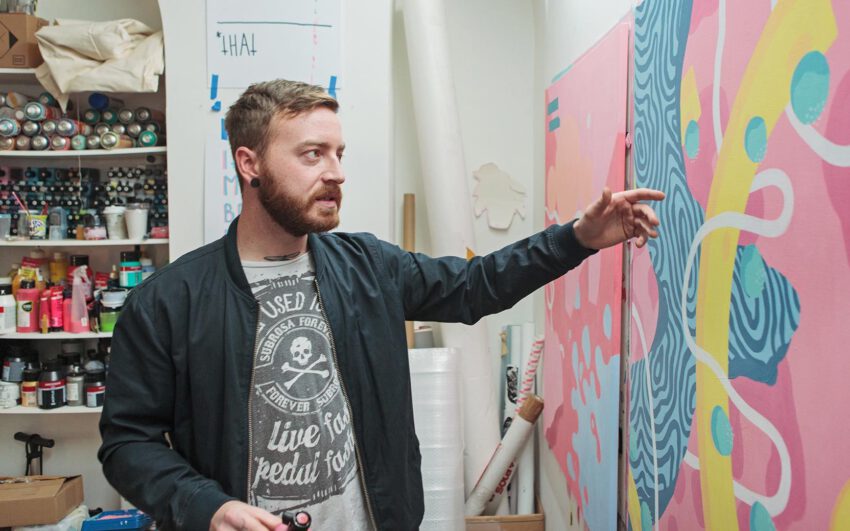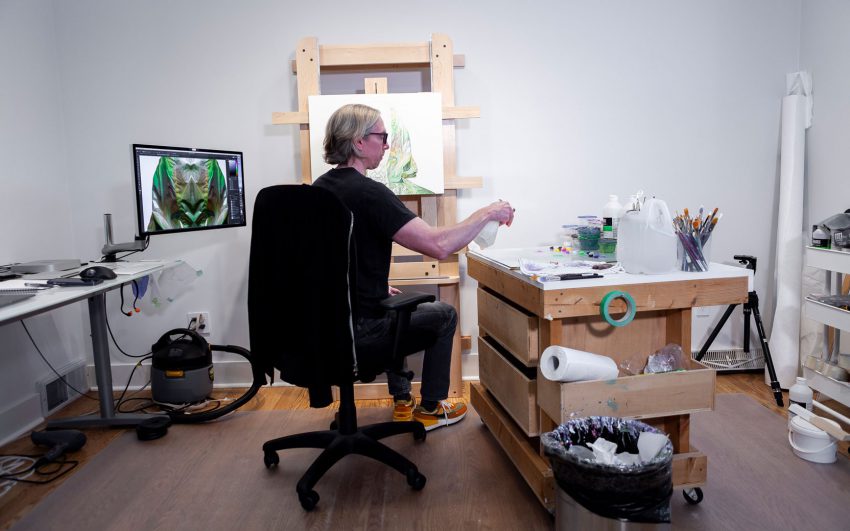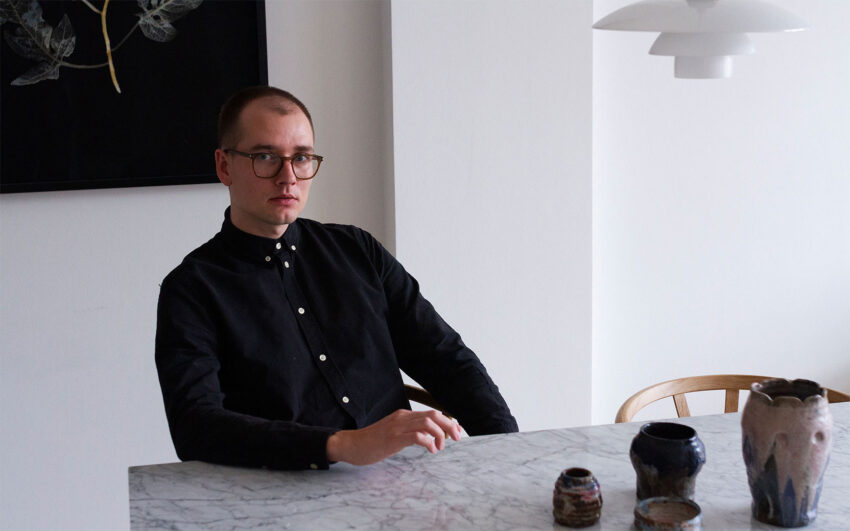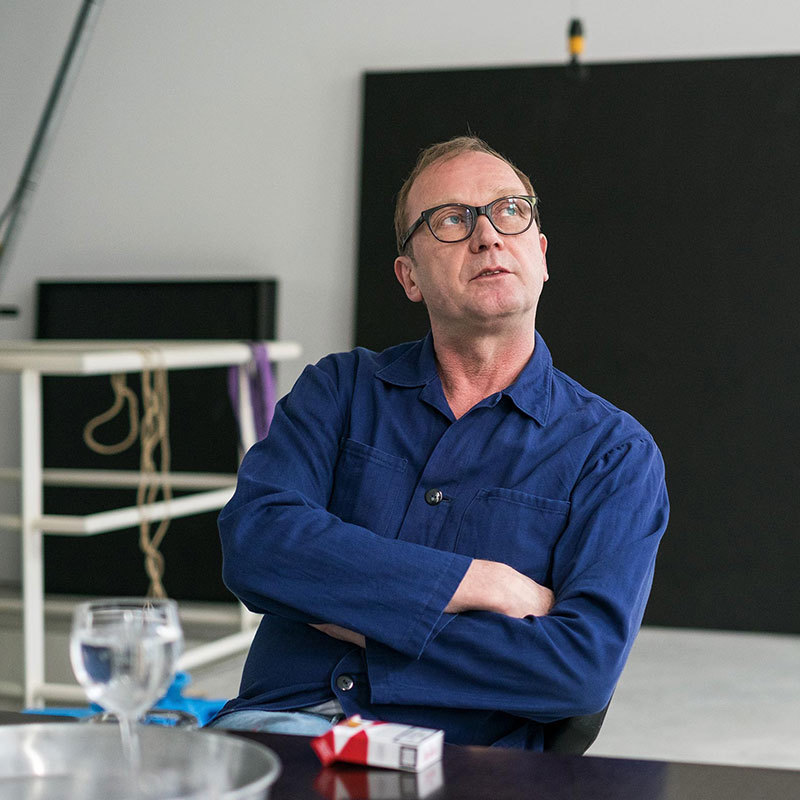Johann König comes from an influential family at home in the art world, and he grew up surrounded by artworks by Andy Warhol, On Kawara, and Gerhard Richter. At the age of eleven an accident with a starting pistol resulted in the loss of most of his eyesight and he has just written a book about this, among other things. His wife, Lena König, is an art historian who began buying art while still a student. Today, the two not only manage one of the most important contemporary art galleries in the world, but also collect art together. We talked with them at their Berlin Gallery, located in the former church of St. Agnes, about spontaneous purchases, advice for young collectors, and about their comprehensive private collection comprising 800 artworks.
Johann, you have just turned 38 and have already published your first autobiography, entitled Blind Gallerist. Why did you write – at this relatively early point in your life – a book about yourself? Why was it so important to you to share your story?
J: The idea was first suggested to me ten years ago, when I had spoken about my accident, that it might be interesting to clarify its occurrence and what it has inadvertently caused to be brought about. At first, I didn’t think that people would find it interesting, but as time grew from the founding and ensuing success of my gallery, my doubts dispersed and I realized that it may have a motivational effect on people to put trust in daring things that they may otherwise be reluctant to undertake. Finally, I met a literary agent at an event and asked her if she thought it would be an interesting story. She was very excited and did for me what I would do for an artist whose work I would like to exhibit. I did not need to publish a book just for myself, but I was willing to write it if it would really reach other people. Another reason was that I saw it as a way to get people into the arts and to break the barrier of trepidation; I noticed that outside of the art context, there is still a great threshold anxiety about actually dealing with art.
You mean to get in touch with art at all and go to your gallery, for example?
J: Precisely. To question everything, for example, what it is you see, or to go to the gallery, to work with art. There's often an elitist image of galleries, although it's actually the most democratic form of art and culture.
In your book you describe how you and Lena met in Vienna. Since then you have married and collect art together. Have you discussed what meaning art has for each of you? You, Johann, come from the art world grew up with art, Lena, you are an art historian. Does art have a similar meaning to each of you?
J: I believe, both of us like many things. There is a very strong exchange between us on how to stand up for something and also an amazing number of connecting interests in art.
Lena König (L): That’s true. I no longer can imagine us without art. We met through it, in the art context. I was personally very interested in art. At the time, I had a very different profession. Johann was the one who went out and made discoveries, and I often noticed that I could share that. He told me about things he saw and was excited about or didn’t understand.
What exactly did you do at the time?
L: At the time we met, I was spokeswoman at the Belvedere in Vienna. Compared to today, I had little contact with contemporary art back then.
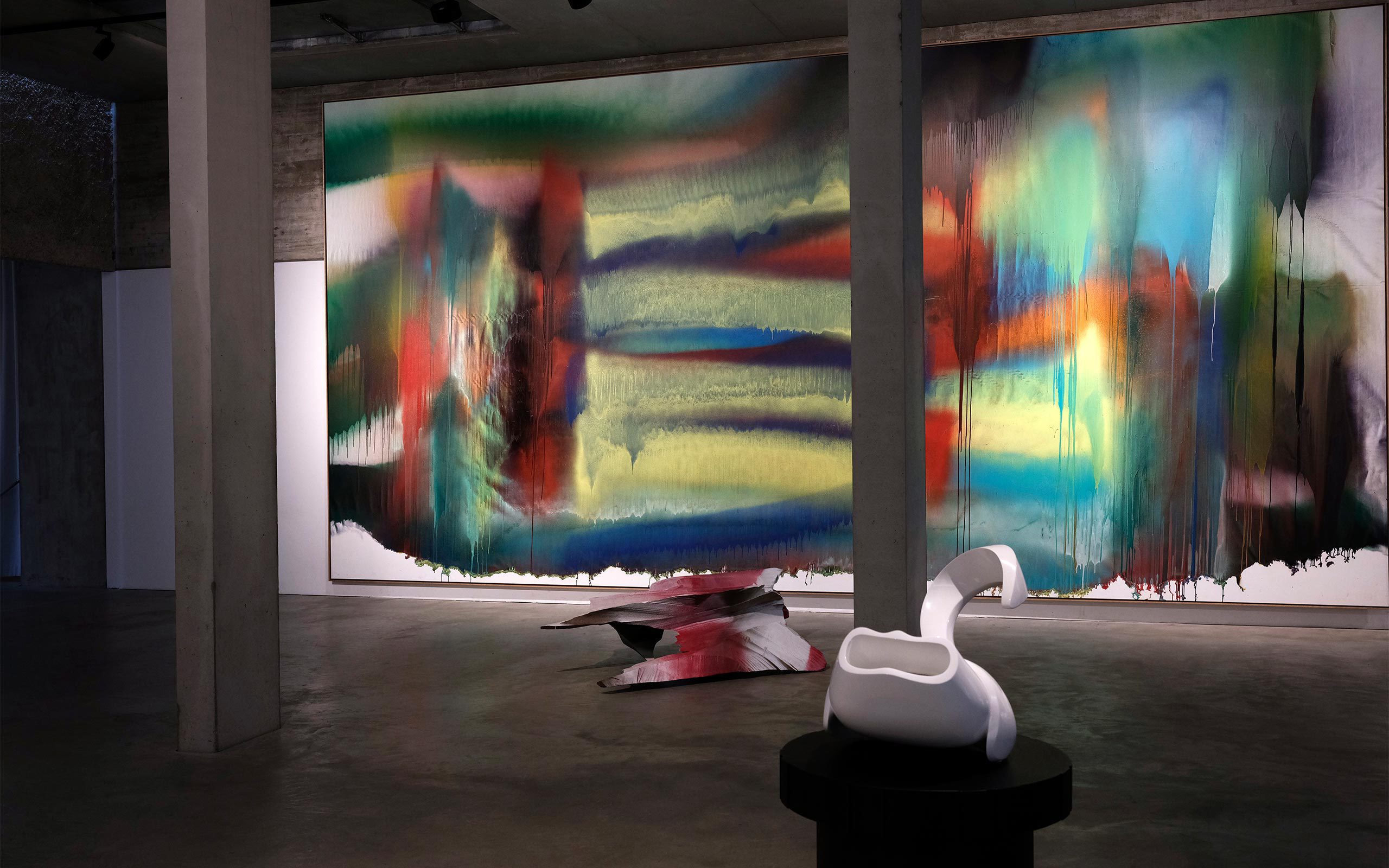
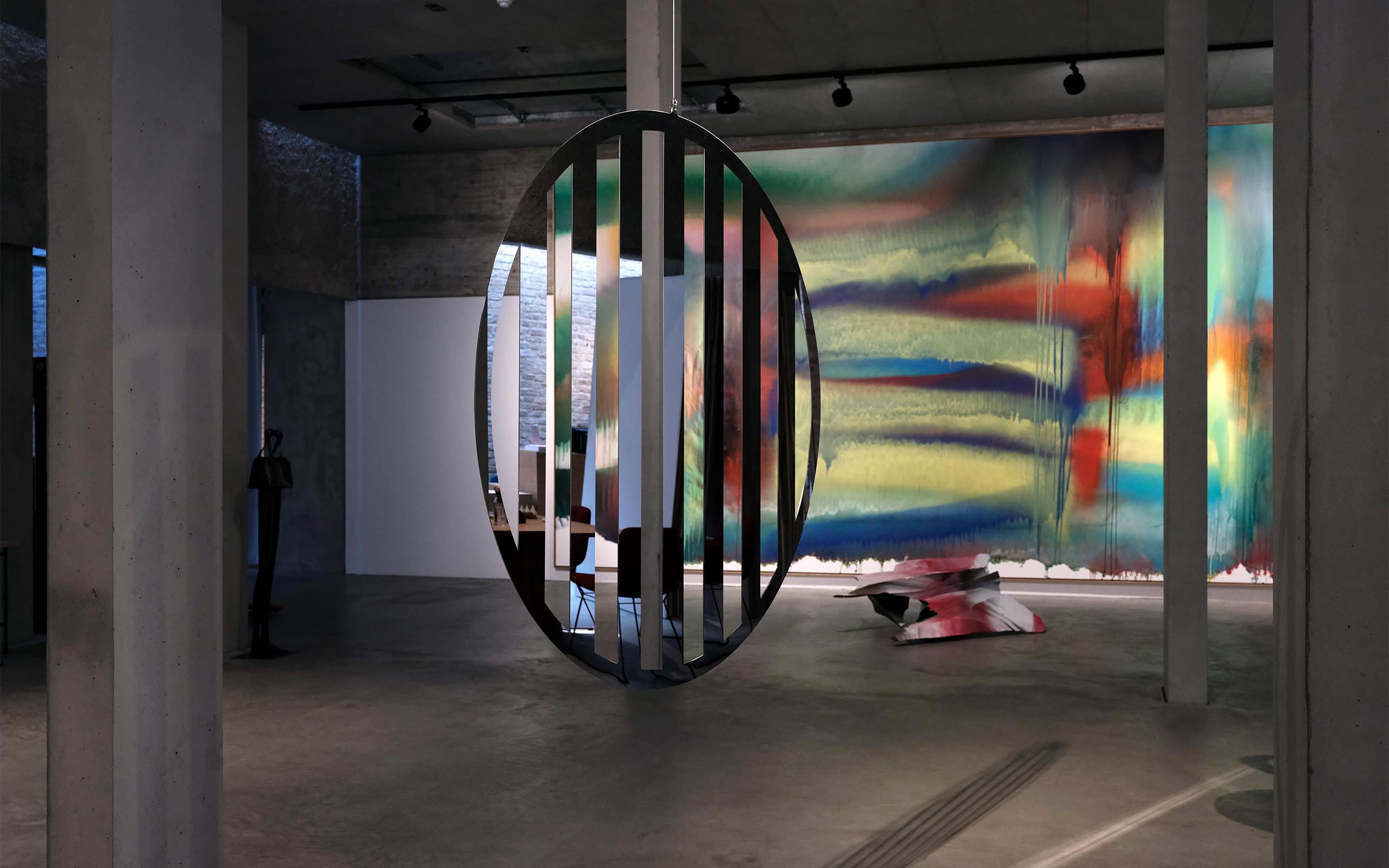
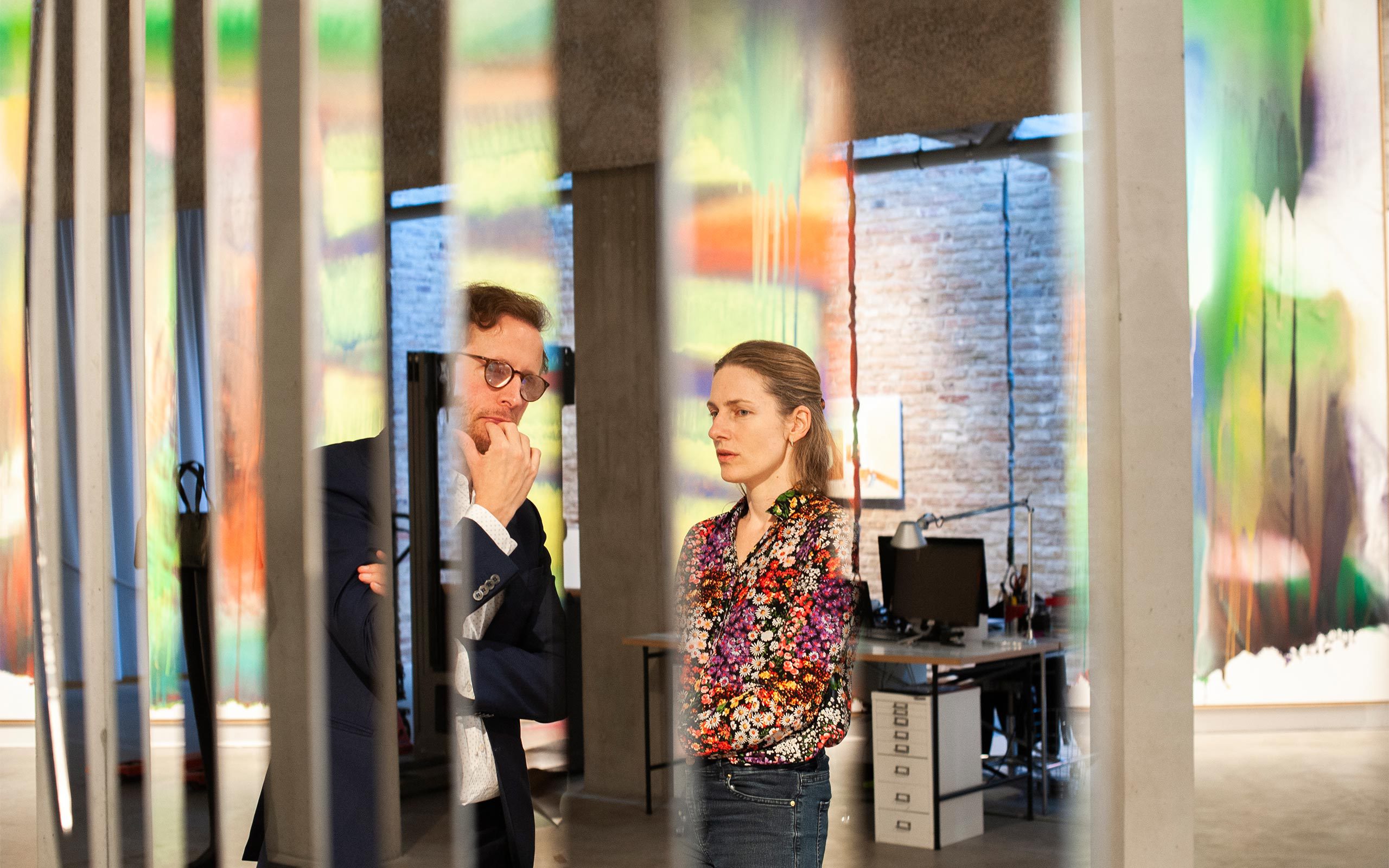
Did you exchange a lot regarding contemporary art in the beginning?
L: Yes, definitely. Contemporary art has always been interesting to me, I have been involved in and looked at it, but professionally I could work with it only to a limited extent, it was almost always only my private pleasure. There is a small exhibition space for contemporary art at the Belvedere where I did as much as I could as speaker. It was basically the same with us: I have read a lot; Johann has seen a lot …
J: … or not (laughs).
L: … and told me about it, sometimes it was the other way around. I told you about the background of an exhibition, and then we went to see it together. That has always been important to me. At some point we bought something. These are very special moments, sharing enthusiasm, it is hard to put into words.
How should I see you as a couple of collectors? Do you collect primarily from a gut feeling, or do you consider resale value and possible price increase when you buy?
J: We buy independently of the market. We own a still life by Nicolas Party that we bought together. I once posted it on Instagram, and immediately received hundreds of requests to buy it. I didn’t even notice that it had suddenly become so expensive because of the demand that had developed. Sometimes we are so busy with other things that we don’t notice. Another example is Richard Aldrich from whom I bought several pictures not dealing with them for quite some time. Recently I asked a gallery about the price of one of his works that I liked and was amazed at how expensive it was.
Do you actually separate the private collection and the acquisitions for the gallery?
J: Intuitively, I realize I always separate when I ask what Lena thinks of it or when Lena asks me what I think of it. The other day, I bought an Albert Oehlen, I did it just like that, but it is also merchandise.
How does it work, do you always coordinate when you buy works for your collection? Or do you bring each other surprises from a fair?
L: It is both. In Oehlen’s case, we received an invoice at some point, and I was a little surprised, because we had looked at the auction catalog together, but hadn’t talked about this work. I think, Johann, you buy a lot of things without me knowing, don't you (laughs)?
J: Yes, that's true. But we really don't buy that much. The other day, we bought the Tobias Brothers (note: Gert and Uwe). We often buy at auctions because it is so easy.
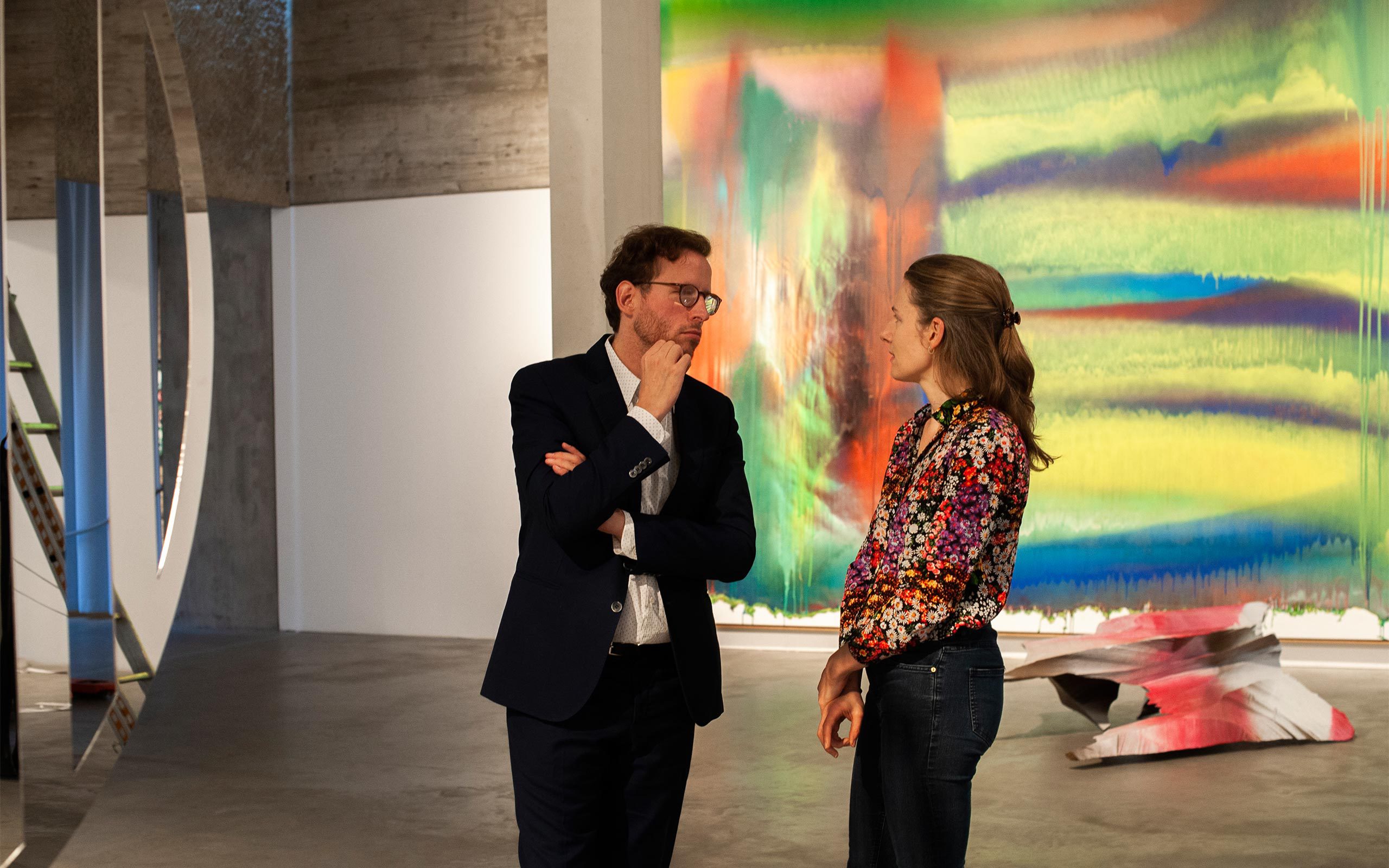
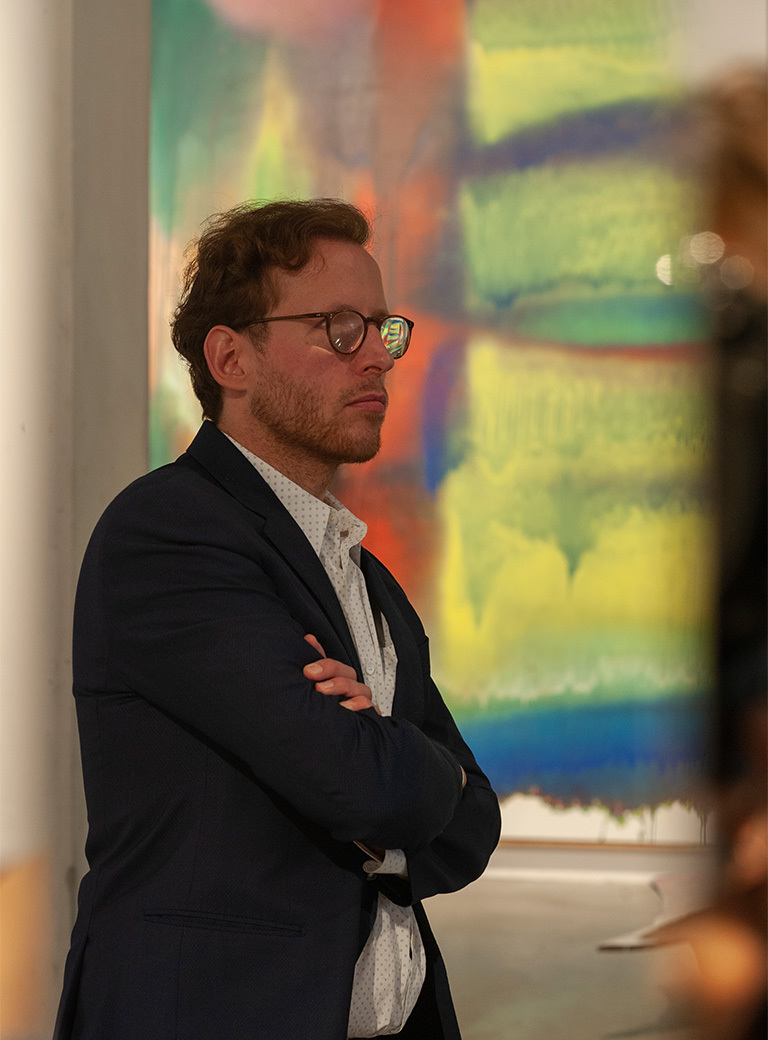
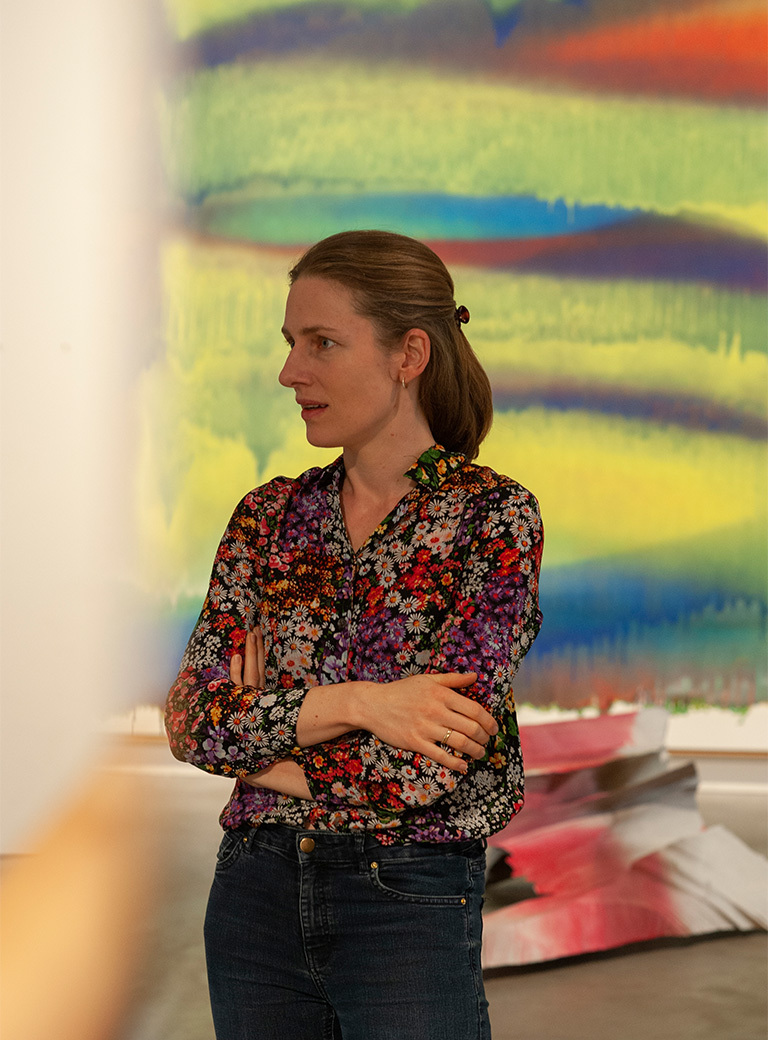
Do you attend auctions?
J: No, we look at catalogs and bid from there. Sometimes I also get hints from colleagues regarding auctions. In this way we bought three paintings by Andi Fischer.
L: There is clearly art that we collect for ourselves and which would make sense as an investment object.
What are you thinking of specifically, Lena?
L: A Man Ray lithograph we bought. There was so much in it for me. Man Ray connects people I adore: Erik Satie, Marcel Duchamp, William Copley. And then there's a picture he dedicated to Satie. I studied Satie scores when learning to play the piano, and Man Ray was always a character I wanted to meet. I wanted to have the picture, it's super personal and now it's hanging in our apartment next to the piano.
What was the first work you collected as a couple?
J: Was it Gloria?
L: Yes, exactly, Gloria by Shannon Ebner.
J: It is such a huge work one can’t really live with it.
L: The word Gloria consists of six letters, at the moment only one is hanging in our apartment.
What else is hanging in your apartment or standing on the floor? Does a certain genre predominate there or do you have a concept after which you collect?
Both simultaneously: No.
L: We collect very spontaneously. Once we were at an auction where photographs by Wolfgang Tillmanns were offered, by Kate Moss. That was a spontaneous decision. It was a good fit.
J: I collected videos for some time, very concentratedly. And I have bought works that focused on the topic of “identity”: Danh Vo, Brian Young, also installation works. But I got more and more away from that.
L: Sometimes, there is just an idea, and I think it goes well with two or three other works.
If you see something you like – do you wonder whether the other would like it?
J: I think it’s more like one of us likes it and shows it to the other and ask directly how he or she likes it. Now, that we talk about it, I don’t really know if I would call myself a collector at all. We have small thematic groups that harmonize with each other, but the purchase may lie more in the past. We often buy works without thinking about what we’ll do with them. I believe we are better advisors than collectors. I advise my clients how to make decisions, but I do not apply this level of planned approach to our own collection.
Nevertheless, was there a point at which you realized that you were not only accumulating art privately, but that it was a conscious decision to buy a work?
L: I think Manfred Pernice was the first work we bought together. It was a conscious decision.
J: That’s right! It wasn’t Gloria, we also have a large sculpture by Pernice. But as I said, we are actually not really structured and don’t pursue a particular agenda. Actually, we do everything wrong. We don't really separate our collection from the gallery. When I look at the Franz West lamp hanging above us, that’s from our private collection, but now it’s hanging here in the gallery; we also have a Franz West sofa.
L: But that's the beauty of it, there are so many connections. I had a lot to do with Franz West in Vienna during his last exhibition. I happened to be at the museum and he was very open and accessible, so I spent a lot of time with him at the time. These connections between us and the artists and their art are beautiful. That's always something very special.
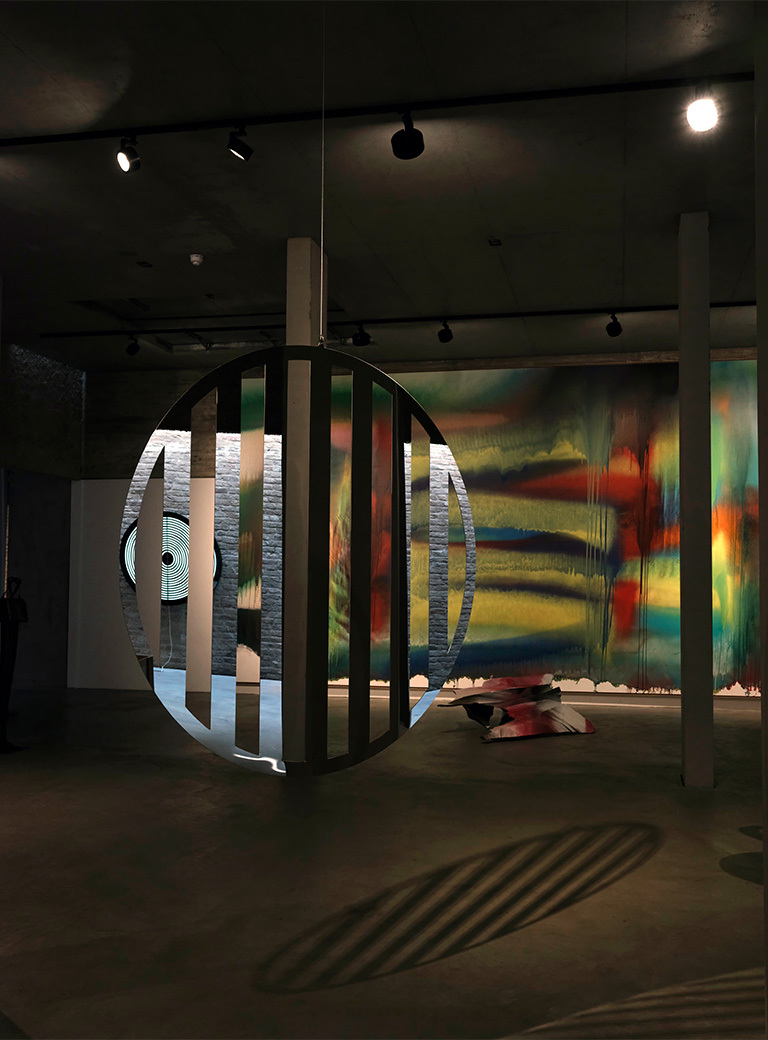
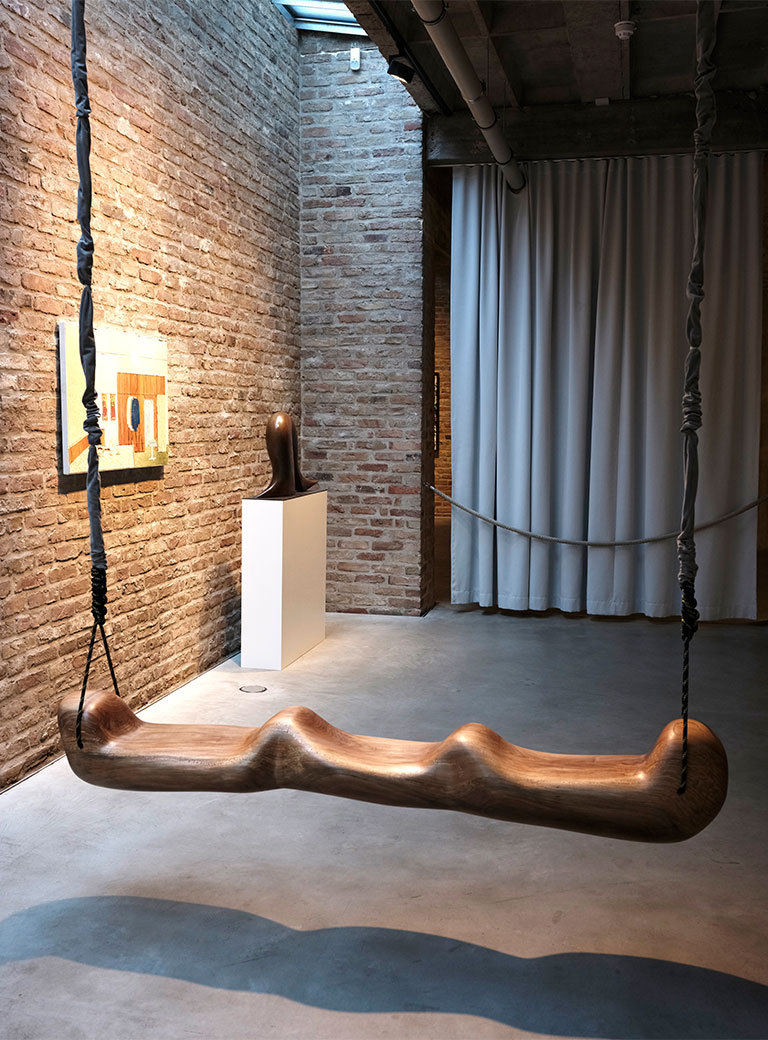
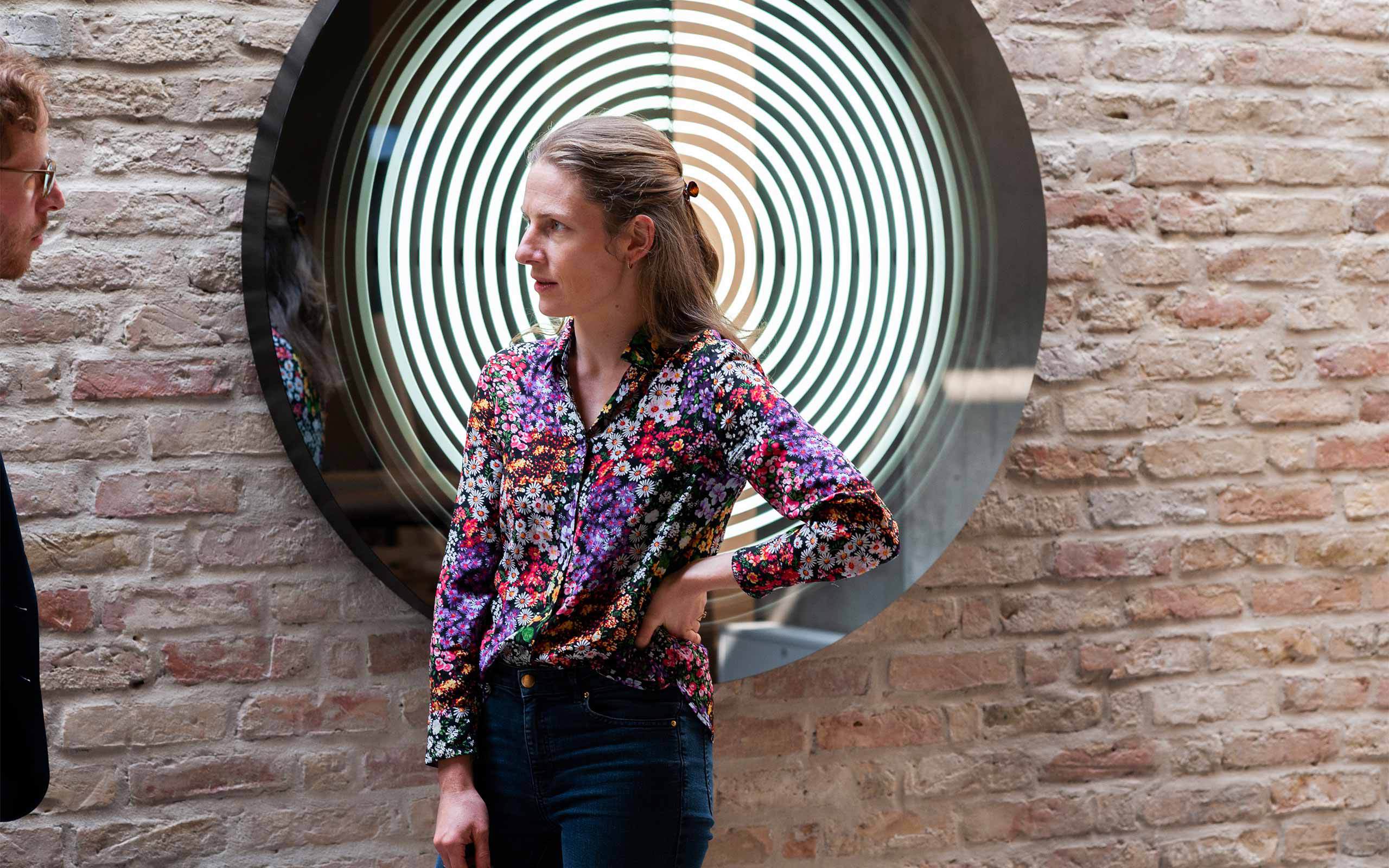
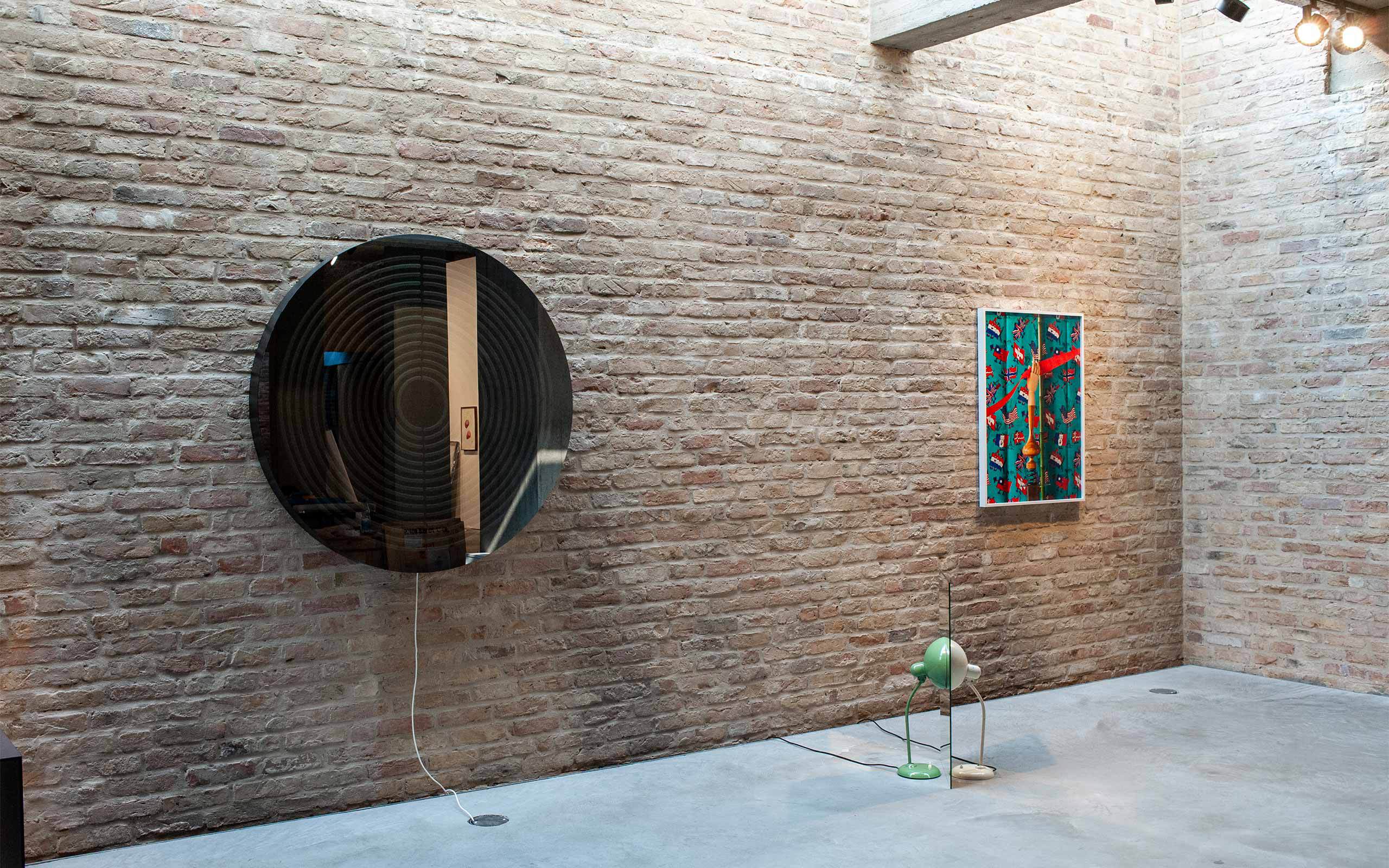
As part of the rebuilding and restoration of St. Agnes (both of which took much longer and were more expensive than originally planned), you had to divest parts of your private collection. Among them was a picture that meant a lot to you, Johann, I am thinking of if On Kawara's date picture (October 4, 1976) that he gave you when you were a child. Do you regret selling this work today? Or perhaps you have since bought it back?
J: No, unfortunately that's always the problem with selling. Once you've sold works, you don't usually get them back, at least with established positions. With young artists it can be that you sell them at a high price and can buy them back cheaply. In retrospect, you're often smarter, but the problem is that at some point you simply reach your financing limits and the banks no longer give you money and then you just have to sell.
L: But it hurts me with On Kawara, I have to say. Just very recently, when there was a fire at the Frankfurt Museum of Modern Art, I saw in photographs how the On Kawaras were carried out and thought about the sale again.
J: Yes, of course. But I also believe that artist's gifts are often there for situations like that. My mother once sold a painting by Gerhard Richter and wrote him that she was very sorry about it, that unfortunately she had to sell the painting in order to buy an apartment for her retirement pension. He replied that she was the last person to have a picture from that time. Those were wedding gifts he gave to friends. All the others had already sold their pictures. He also said something like "that's what it's for".
Does that mean that you are grateful to On Kawara, Johann?
J: Yes, exactly. Without him I would not have this great gallery. Nevertheless, it is a sacrifice you make. When I started the gallery, it was like I didn’t sell art. And I think that’s a contradiction, because if you buy art you have to be allowed to resell it. You have to do that responsibly. I also have no problem with collectors who resell works they bought from us. The question is: how they do it, in what time and in what way. You are misguided when you buy something to resell it. But if you reorient yourself and come to a point when things have changed, then it is so. The art trade is a new present anyway.
The artist list of the König Galerie shows an almost gender parity. Do you pay attention when collecting as to whether the art you buy is created by women or by men?
J: We don't make any distinction. I believe that we have a lot of women in our collection.
L: Yes, for example Amelie von Wulffen, Ella Kruglyanskaya, Shannon Ebner.
But do you pay attention, Johann, when you see something you like?
J: No, that's what’s interesting. I've always exhibited an incredible number of women, but not because I thought I had to exhibit women now, but rather because I liked the art. My last interview with Joko Winterscheidt, we did a podcast. When he told me whom he was interviewing apart from me, I noticed that they were only men so far. In such situations I think about it and certainly notice that. I thought it was cool that he left the spot in the podcast. Lena and I both come from a generation in which these differences are fortunately disappearing and at the same time an awareness of them is emerging. I would also have noticed it the other way around, if Joko had only interviewed women.
It appears – at least from the outside – as if you’re buying art privately in the same way as for the gallery program, not artificially, the artists fit into your gallery because of their art and not, because it has been artificially imposed from the outside. Or was the keyword “women’s quota” ever used for the gallery’s program?
Both: No.
J: It wouldn’t make sense for us. But I consider it important that there should be a women’s quota, at least for buying art for public companies. You could make a start there, until at some point it becomes self-evident that a women’s quota is no longer necessary.
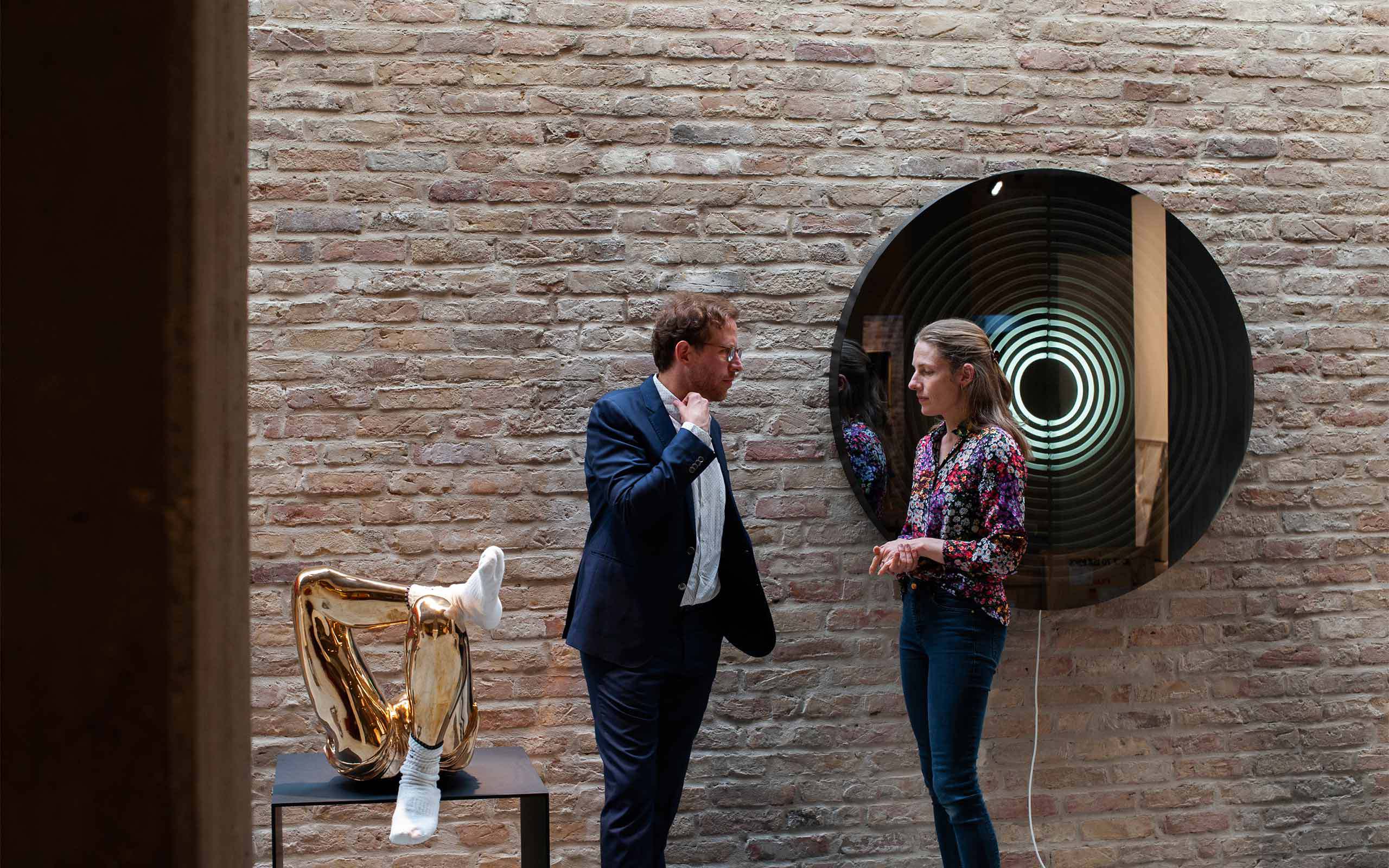
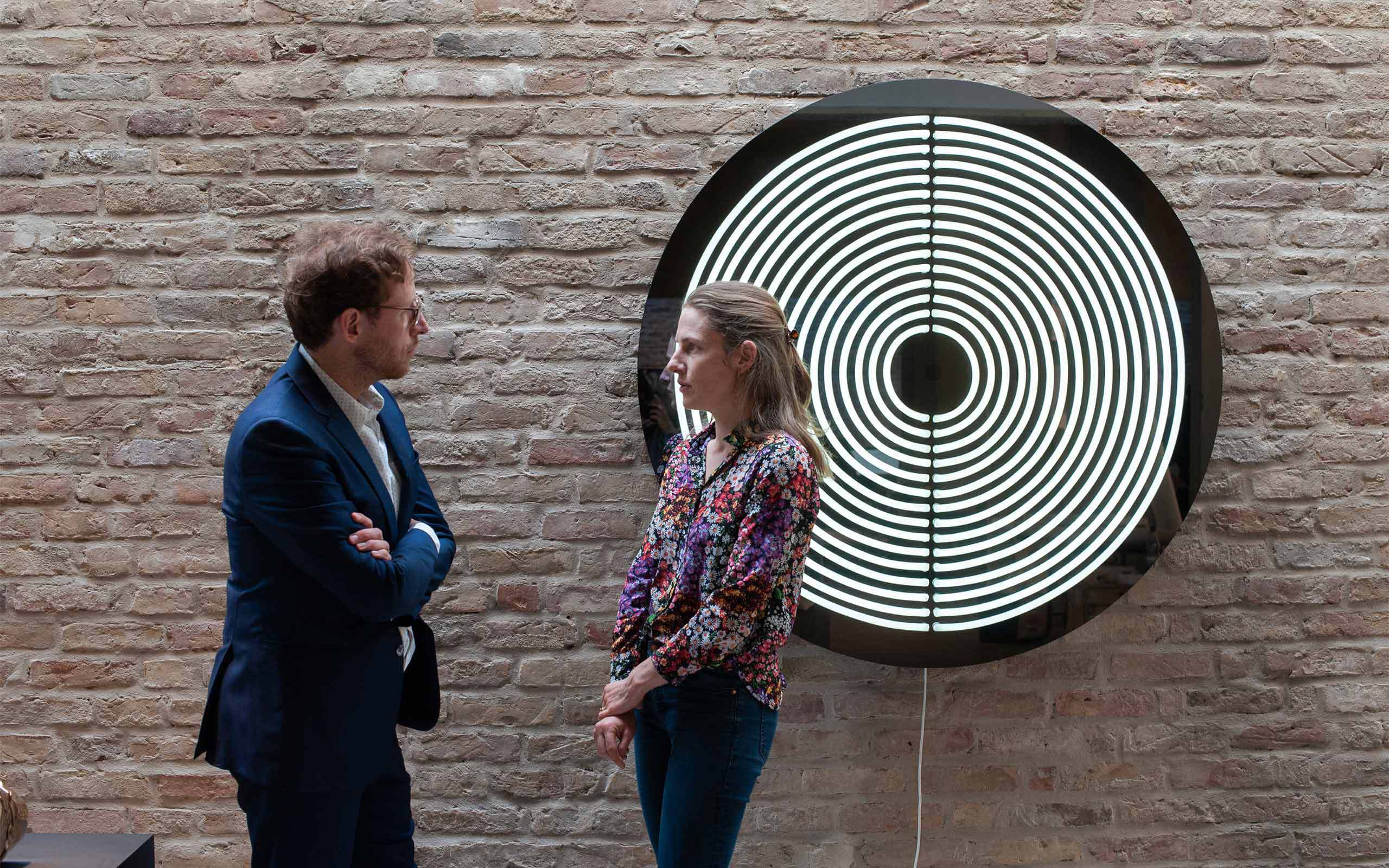
Do the gallery program and the collection coincide?
JK: We don’t buy enough of our own artists. We very much have both the collector and the artist as a customer in mind. Every time we sell a good piece of work to a good place, something happens. It's often the case when we keep something for ourselves that I wonder if it's good now. Then I think again: we should really keep more. We also have children, who knows what will happen later. Maybe at some point we'll give our collection to a foundation. I didn't sell to gallery owners in the past, which I regret today. Seen in retrospect, that was wrong. Ernst Beyeler was a gallery owner, Anthony d'Offay gave the Tate a fantastic collection. Alexander Schröder has just given a great time capsule to the Museum Ludwig. The gallery owners are often the best collectors.
That's why we're conducting the interview today, Johann ...
J (laughs): ... I see! The funny thing is that we rather buy things in passing and the classic collector usually has a different profession and is looking for a different form of confrontation and thinks more consciously and sometimes more contemplatively about collecting and what it actually is. What one can do with one’s budget?
L: ... and how to present your collection.
J: Exactly. This is not a question for us and is much more intuitive than planned on the drawing board.
A well-known German collector once told me that a work of art had annoyed him so much because he didn't know what the work he had bought wanted from him. Can you understand this motif?
Both: Yes.
J: I’d say that there are things that leave you perplexed. You can never fully understand art, at least not good art.
L: Sometimes, I even find the discomfiture very pleasant, it does something to you. I also find it exciting when Johann buys something that I think about but don't understand. You can get to know the other person in a different way. There was one work that I really wanted to know what it was all about. I wondered why I bounced off it so much. We even hung it in the bedroom.
J: Yes, that was really crazy. Sometimes you realize there are things that don't last at all.
L: Exactly. Then we sold it again. JK: Sometimes you buy young artists, and in the course of time you realize that somehow it doesn't last.
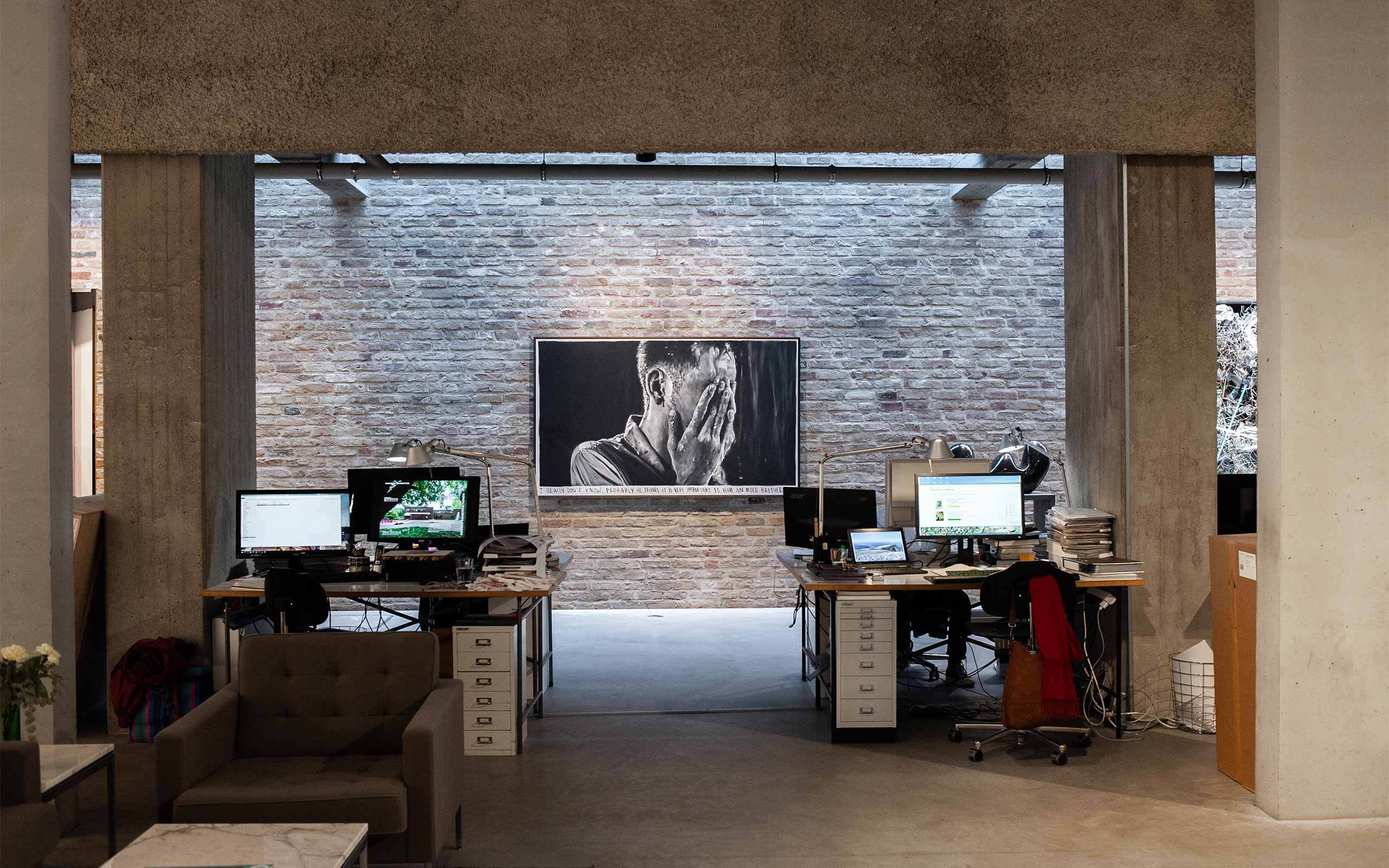

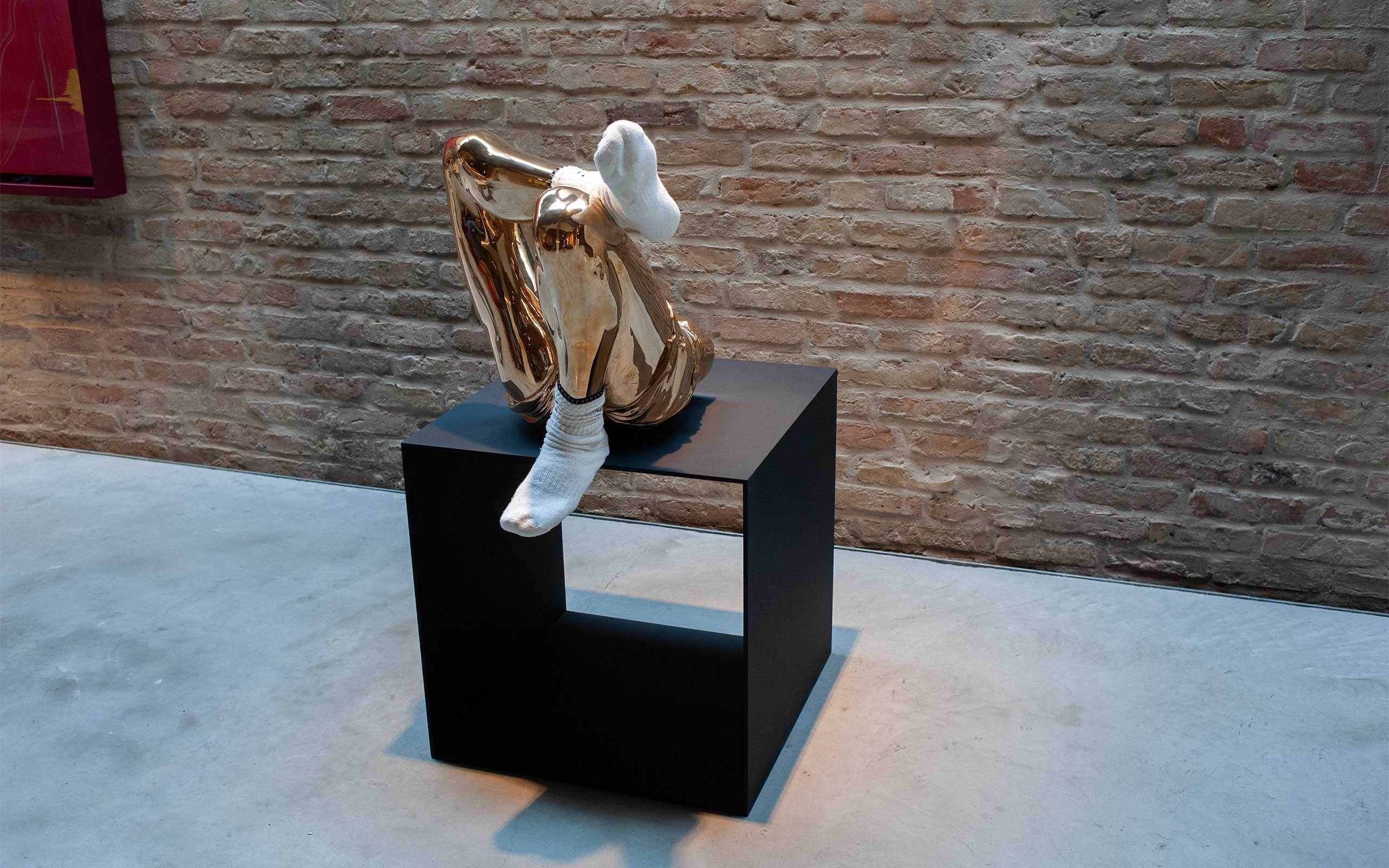
The artists you represent are for the most part very successful and often not affordable for many, especially younger collectors. In this context: how do you see the need to inspire new art lovers and introduce them to collecting? What approach do you propose to seriously engage with art?
J: Well, I've always warned against buying editions and throttled myself in the process. But now I realize that editions are enriching because they allow a collector to afford a piece of an artist’s entire work. And that's a good way to begin collecting.
Do you see it the same way, Lena?
L: Yes, absolutely. We have been influenced by art in very different ways, yet I agree with that. Johann grew up surrounded by art. That wasn't the case in my family, only in our circle of friends. My father also studied art history, but then became a teacher and did something different with it. The only possibility for me to live with art was through editions. I was totally grateful that they existed. At Parkett they were relatively cheap at the beginning, or I bought them at Texte zur Kunst. When I was 19, I bought a limited edition of Louise Bourgeois at the Tate. I still have it today.
Do you have other tips for young collectors?
L: I advise everyone to go to auctions. I used to do that a lot in the past, even if I couldn’t afford to buy anything. I once bought a Luci Stahl at a Caritas auction. I’ve always found auctions very interesting.
Some collectors open showrooms or even build museums for their own collection, others take permanent loans or donate to public institutions. Can you ever imagine a "Museum König"?
J: This place here (St. Agnes) is actually predestined for it. But for that we would have to collect in a more focused way. Perhaps it will come; we are still young. But when I look at Ernst Beyeler’s work of a lifetime, all the works he bought for the Fondation Beyeler – and that is what carries the place – considering that he was a gallery owner the collection he created is certainly impressive. But seen in context with the collection in the Kunstmuseum Basel, the collection in the Kunstmuseum Basel is certainly much more important. And if one is honest, nowadays it is no longer possible to get such relevance with a single collection. Another example are the Berggruen Collection and the Collection Ulla and Heiner Pietzsch. I think it's great that Pietzsch's surrealism collection is coming to the Museum of the 20th Century in Berlin and will be integrated into their collection. You have to take yourself very seriously or feel important when you consider your own collection so relevant that you build your own museum for it. However, using your collection to fill gaps in an existing collection is something else. I think it is good that Gerhard Richter says he doesn't need his own museum. Context is the important thing.
Is there a work that you would like to have in your collection in the future?
J: I'm still upset that five years ago I didn't buy a David Hockney. It would have been very expensive back then, but now it is no longer possible. LK: I don't always feel the need to own a work. There is art that I find incredibly impressive, like Cady Noland's work. Nevertheless, it's okay for me to see the works in the museum. I once saw something by Lutz Bacher that interested me a lot. When I'm at Art Basel, I sometimes start dreaming, imagining that theoretically one could really own what is presented there, for example a work by Henri Rousseau. But that is truly no longer possible, it's simply too expensive. At some point I would like to have another Old Master.
J: I'd like to have a small sculpture by Ewald Mataré. And I want to buy another Robert Mapplethorpe, like this one here (Johann shows us a work by the artist on his mobile phone that shows a black male model.
L: Didn't you want to buy a Botero cat?
J: (laughs...) Oh, that's right, we'll just hang them next to each other.
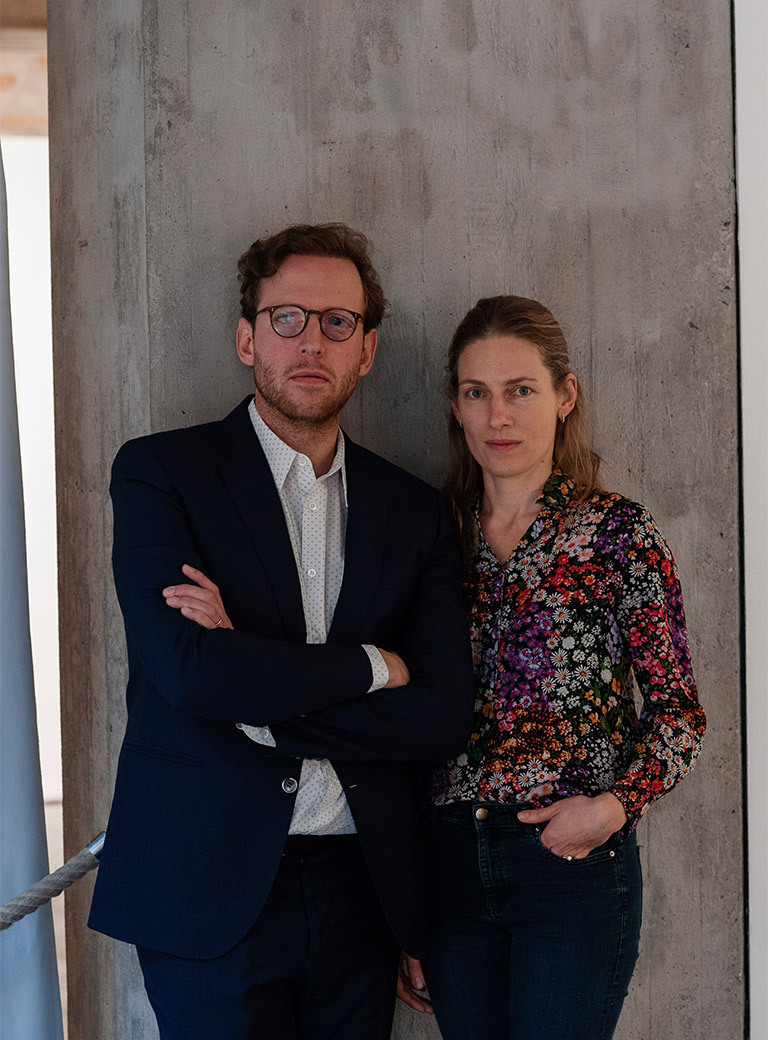
Interview: Dr. Sylvia Metz
Photos: Franziska Rieder
Links:


